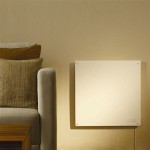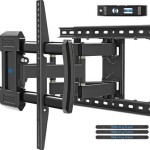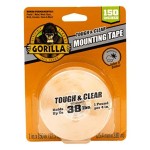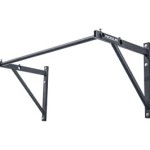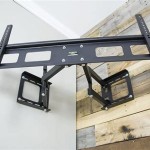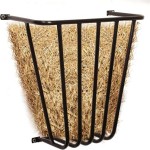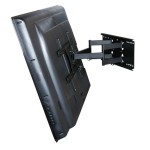Wall Mounted Oscillating Fan With Remote: A Comprehensive Guide
Wall mounted oscillating fans with remote control functionalities offer a practical and space-saving cooling solution for homes, offices, and various other environments. These fans combine the benefits of traditional oscillating fans with the convenience of remote operation and the space-saving advantage of wall mounting. Understanding the features, benefits, and installation considerations is essential when selecting the appropriate model for a specific need.
This article provides a comprehensive guide to wall mounted oscillating fans with remote controls. It will delve into the key features, benefits, and factors to consider during purchase and installation. The information presented is designed to equip the reader with the knowledge necessary to make an informed decision and effectively utilize this type of cooling appliance.
Key Features and Functionality
Wall mounted oscillating fans with remote controls are designed with a range of features that contribute to their functionality and user convenience. These features differentiate models and influence their overall performance and suitability for specific applications. Understanding these features is crucial in selecting the best fan for a particular environment.
Oscillation: The oscillating function is a core feature, allowing the fan to sweep airflow across a wider area compared to a stationary fan. The degree of oscillation may vary between models, typically ranging from 70 to 90 degrees. Some models offer adjustable oscillation angles, allowing the user to customize the area of coverage. This oscillation is driven by a motor separate from the fan blade motor, ensuring smooth and consistent movement.
Remote Control Operation: The inclusion of a remote control provides convenient operation from a distance. Typical remote control functionalities include power on/off, speed adjustment, oscillation control (on/off), and timer settings. The range of the remote control is an important consideration, particularly for larger rooms. Some models use infrared (IR) remotes, requiring a clear line of sight, while others utilize radio frequency (RF) remotes, offering greater range and less sensitivity to obstructions.
Speed Settings: Most wall mounted oscillating fans offer multiple speed settings, allowing users to adjust the airflow intensity to their preference. Typically, these fans have three speed settings: low, medium, and high. More advanced models may offer additional speed settings or even a "turbo" mode for maximum airflow. The noise level at each speed setting is also a crucial consideration, particularly for bedroom use.
Timer Function: A timer function allows the user to set the fan to automatically turn off after a specified period. This is a useful feature for energy conservation and for use during sleep. Timer settings typically range from 30 minutes to several hours, often with incremental options. Some models have more sophisticated timer functionalities, such as pre-set schedules or countdown timers.
Fan Blade Design and Material: The design of the fan blades significantly impacts the airflow and noise level. Blades are typically made of plastic or metal. Plastic blades are generally lighter and quieter, while metal blades tend to be more durable and can produce stronger airflow. Blade design also affects the efficiency of the fan, impacting power consumption and overall cooling performance. Aerodynamic blade designs aim to maximize airflow while minimizing noise.
Motor Type and Power: The motor is the heart of the fan, driving both the fan blades and the oscillation mechanism. Different motor types are used, with varying levels of efficiency and noise. DC motors are generally more energy-efficient and quieter than AC motors, but they may also be more expensive. The power rating of the motor affects the airflow capacity of the fan. Higher wattage typically translates to stronger airflow.
Construction and Materials: The quality of the construction and materials used in the fan's housing and components impacts its durability and lifespan. Durable plastics are generally preferred for the housing, while metal components are used for critical parts like the motor shaft and blade supports. Resistance to UV exposure is also an important consideration for fans installed in areas with direct sunlight.
Adjustable Tilt: Some wall-mounted oscillating fans provide adjustable tilt, enabling users to direct the airflow up or down. This adjustability enhances the versatility of the fan, allowing for customized cooling in different areas of the room. The tilt mechanism should be robust and secure, preventing the fan from inadvertently changing position.
Benefits of Wall Mounted Oscillating Fans with Remote
Wall mounted oscillating fans with remote controls offer several advantages over traditional floor fans and other cooling solutions. These benefits make them a popular choice for a variety of applications, from residential homes to commercial spaces. The specific advantages relate to space-saving design, convenient operation, and versatile functionality.
Space Saving: Wall mounting frees up valuable floor space, which is particularly beneficial in smaller rooms or areas with limited floor area. Unlike freestanding fans, wall mounted fans do not obstruct walkways or take up space that could be used for furniture or other necessities. This is a significant advantage in environments where maximizing usable space is a priority.
Convenient Remote Control: The remote control operation eliminates the need to manually adjust the fan settings. Users can easily control the power, speed, oscillation, and timer functions from anywhere in the room. This convenience is particularly useful for individuals with mobility issues or for adjusting the fan settings without having to get up. The remote control enhances the user experience and adds a layer of ease to operation.
Improved Air Circulation: The oscillating function improves air circulation throughout the room, helping to distribute cool air evenly and preventing stagnant air pockets. This is particularly important in larger rooms or areas with poor ventilation. By constantly moving the air, wall mounted oscillating fans create a more comfortable and consistent temperature throughout the space. Consistent air circulation also helps to reduce the risk of mold and mildew growth by preventing moisture buildup.
Enhanced Safety: By being mounted on the wall, these fans are less accessible to children and pets, reducing the risk of accidental contact or injury. The height of the fan makes it more difficult for small children to reach the blades, and the wall mounting prevents pets from knocking the fan over. This enhanced safety is a crucial consideration for families with young children or pets.
Year-Round Use: While primarily used for cooling during warmer months, wall mounted oscillating fans can also be used during the winter to improve air circulation and distribute heat more effectively. By circulating the warm air that tends to rise to the ceiling, these fans can help to create a more even temperature throughout the room, reducing heating costs and improving overall comfort. This year-round usability makes wall mounted oscillating fans a versatile investment.
Energy Efficiency: Wall mounted oscillating fans generally consume less energy than air conditioners, making them a more cost-effective cooling solution. By using a fan instead of an air conditioner, users can significantly reduce their energy consumption and lower their electricity bills. The energy efficiency of the fan can be further enhanced by using the timer function to automatically turn off the fan when it is not needed.
Easy Installation: While some basic DIY skills are required, wall mounted oscillating fans are generally easy to install. Most models come with mounting hardware and instructions, making the installation process straightforward. However, it is important to ensure that the wall is strong enough to support the weight of the fan and that the mounting hardware is securely fastened. If unsure, professional installation is recommended.
Factors to Consider When Purchasing and Installing
Selecting the right wall mounted oscillating fan with remote and ensuring proper installation are crucial for optimal performance and longevity. Several factors should be carefully considered before making a purchase and during the installation process. These considerations relate to the size of the room, the mounting location, and the power supply, among other things.
Room Size: The size of the room dictates the required airflow capacity of the fan. Larger rooms require fans with more powerful motors and larger blade spans to effectively circulate air. Smaller rooms can be adequately cooled with smaller, less powerful fans. Consider the cubic footage of the room when selecting a fan, and choose a model that is appropriately sized for the space.
Mounting Location: The location of the fan on the wall significantly impacts its effectiveness. The fan should be mounted in a location that allows for optimal air circulation throughout the room. Avoid mounting the fan in corners or behind furniture, as this can obstruct airflow. Consider the height of the ceiling and the desired angle of airflow when selecting a mounting location. Ensure that the wall in the chosen location is strong enough to support the weight of the fan.
Power Supply: Ensure that there is a convenient power outlet near the mounting location. If not, an extension cord may be necessary. However, it is important to use a heavy-duty extension cord that is rated for the fan's power consumption to prevent overheating or electrical hazards. Consider the placement of the power cord and ensure that it does not create a tripping hazard. In some cases, it may be necessary to hire an electrician to install a new power outlet near the desired mounting location.
Noise Level: The noise level of the fan is an important consideration, particularly for bedroom use. Some fans can be quite noisy, especially at higher speed settings. Look for fans that are specifically designed to be quiet, and read reviews to get an idea of the actual noise level. Consider the noise level at different speed settings, and choose a fan that is quiet enough to not be disruptive.
Remote Control Range: The range of the remote control should be sufficient for the size of the room. If the remote control has a limited range, it may be necessary to be close to the fan in order to operate it. Consider the typical distance from which you will be operating the fan, and choose a model with a remote control that has adequate range. RF remotes generally offer better range than IR remotes.
Safety Features: Look for fans that have safety features such as overload protection and thermal cutoffs. These features help to prevent overheating and electrical hazards. Ensure that the fan is certified by a reputable safety organization, such as UL or ETL. Check for features like enclosed motors to protect against dust and debris accumulation.
Warranty: A warranty provides protection against defects in materials and workmanship. Look for fans that have a reasonable warranty period, and read the warranty terms carefully to understand what is covered. A longer warranty period generally indicates that the manufacturer has confidence in the quality of their product.
Installation Instructions: Carefully read and follow the installation instructions provided by the manufacturer. Ensure that all mounting hardware is securely fastened and that the fan is properly balanced. If you are not comfortable with the installation process, consider hiring a professional installer. Improper installation can lead to damage to the fan or the wall, and it can also create a safety hazard.

Wall Mount Oscillating Fan Small Vintage Style Hanging Fans Delmarfans Com

King Wfo 30 In Oscillation Indoor Or Outdoor Black Wall Mounted Fan The Fans Department At Com

Air King 9850 18 Wall Mount Fan Oscillating 3 Speeds 120v Ac Remote Control Wal Com

Hampton Bay 24 In 3 Speed Oscillating High Velocity Black Wall Mount Fan With Blades 82024 The Home

Wall Mount Fan With Remote Taotronics 16 Inch 3 Wind Modes 8 Hour Timer 90 Degree Oscillating Wal Com

16 In 3 Speed Oscillating Wall Mount Fan With Remote Control

8 Small Wall Mount Fan With Remote Control 90 Oscillating 4 Speeds

Comfort Zone 16 3 Speed Oscillating Wall Mount Fan With Remote Control Timer And Adjustable Tilt White Wal Com

Vevor Wall Mount Misting Fan 24 In 3 Speed High Velocity Max 7000 Cfm Waterproof Oscillating Gybgsfsycss24bcvov1 The Home

